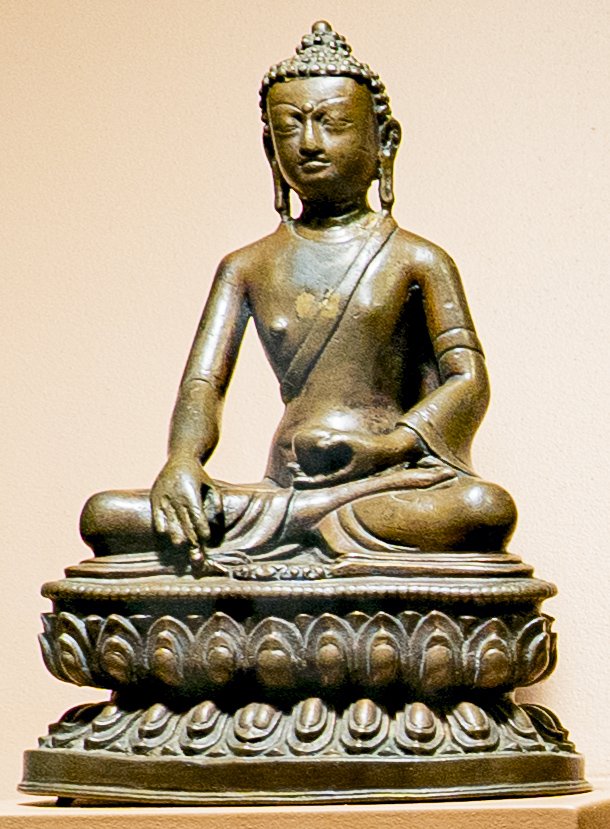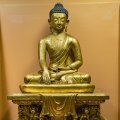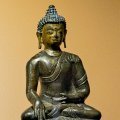Patan Museum (Nepal): photo 113
Photo 113 of 212 in Gallery: Patan Museum (Nepal)

Image title: Shakyamuni Buddha (Nepal, 17th century)
Description of the photo
This Copper sculpture shows an image of Shakyamuni Buddha, from the 17th century origination from Nepal.—Materials used: Copper.
[Shakyamuni Buddha Defeats Mara]—These three images of Shakyamuni Buddha depict one of his most significant and popular poses at the moment he attained Enlightenment under the bodhi tree at Bodhgaya in northern India. This critical event in the Buddha's life is known as “Mara-vijaya,” Victory over Mara. When Mara, the Evil-one, challenged his right to Enlightenment, Shakyamuni lightly touched Mother Earth with his fingertips, calling on her to bear witness to his struggle, over uncounted lifetimes, to come to this moment. At Earth's great roar, the discomfited Mara and his forces fled defeated. Like Shakyamuni at Bodhgaya, the images sit in the classic Mara-vijaya (earth-witness) pose. One hand rests palm upward in the lap, the other is pendant as if touching earth. The left hand of the smallest image supports a monk's begging bowl. Each image exhibits some of the principal lakshanas, physical signs of superior beings such as the Buddha. Most important of these is the ushnisha (cranial pro-tuberance) surmounted with a symbolic crest jewel.
Gallery information:
The Patan Museum is located on the Durbar square of Patan (Lalitpur/Lalitapura, Kathmandu, Nepal) which is associated Keshav Narayan Chowk (Keshavnarayan)—a form of Lord Vishnu. Being listed as a World Heritage Site, the whole of Durbar square is filled with exquisite temples, sculptures and other ancient structures, of which the ancient history history can be traced to the Malla Kings of Lalitpur. It is an important site for both Buddhism and Hinduism.
Photo details:
Date: 2019-12-02
Camera: SONY ILCE-6400
Exposure: 1/25
Aperture: f/4.5
ISO: 100
Focal length: 18mm
High resolution:
Download file
Size: 336.82 KB
Resolution: 610 x 829
© Photograph by Gabe Hiemstra.
License: CC BY-NC-ND 4.0

